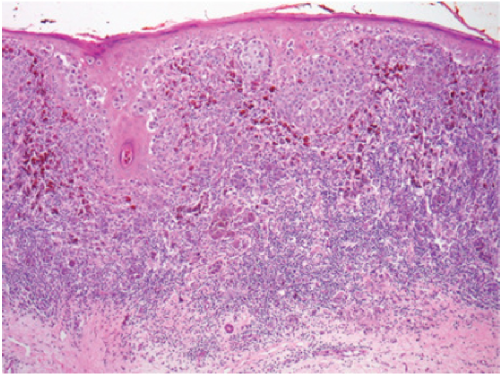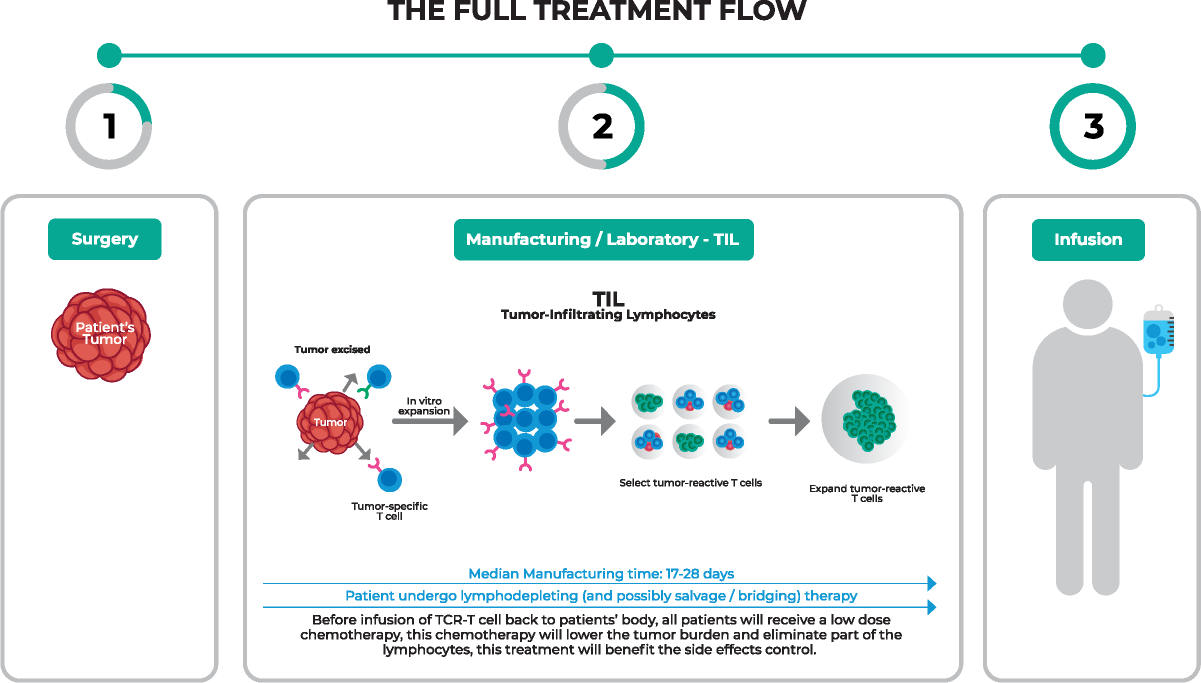

Tumor-infiltrating lymphocytes are white blood cells that have left the bloodstream and migrated towards a tumor. TILs can often be found in the tumor stroma and within the tumor itself. Their functions can dynamically change throughout tumor progression and in response to anticancer therapy. TILs are implicated in killing tumor cells. The presence of lymphocytes in tumors is often associated with better clinical outcomes (after surgery or immunotherapy). 45
In Adoptive T cell transfer therapy, TILs are expanded ex vivo from surgically resected tumors that have been cut into small fragments or from single cell suspensions isolated from the tumor fragments. Multiple individual cultures are established, grown separately and assayed for specific tumor recognition. TILs are expanded over the course of a few weeks with a high dose of IL-2 in 24-well plates. Selected TIL lines that presented best tumor reactivity are then further expanded in a “rapid expansion protocol” (REP), which uses anti-CD3 activation for a typical period of two weeks. The final post-REP TIL is infused back into the patient. The process can also involve a preliminary chemotherapy regimen to deplete endogenous lymphocytes in order to provide the adoptively transferred TILs with enough access to surround the tumor sites. This chemotherapy regimen is given 7 days before the expanded TIL infusion.46 This involves pretreatment with a combination of fludarabine and cyclophosphamide. Lympho-depletion is thought to eliminate the negative efects of other lymphocytes that may compete for growth factors and decrease anti-tumor efects of the TILs, depleting regulatory or inhibitory lymphocyte populations. 47

Very high magnification micrograph of tumor infiltrating lymphocytes, abbreviated TILs, in a case of colorectal carcinoma. TILs may also be spelled tumour infiltrating lymphocytes. H&E stain.
The combination of TILs with a high dose of IL-2 presents multiple clinical trials demonstrating rates near 50% or more patients efectively responding. 48 In summary of TIL therapy clinical trials, TIL therapy was found to induce complete and durable regression of metastatic melanoma. Tumor reduction of 50% or more was observed in about half of patients. 49-50 Some patients experienced complete responses with no detectable tumor remaining years after treatment. 51 In one clinical trials, among the 93 patients treated with TILs, 19 patients had complete remissions that lasted greater than 3 years. 48
TIL therapy in combination with prior immunotherapy treatment, such as IL-2 and anti-CTLA4 (ipilimumab) had higher response rates and more durable responses in clinical trials. This suggests a synergistic efect of prior immunotherapy with TIL therapy. 51

Cancer specific T-cells can be obtained by fragmentation and isolation of tumor infiltrating lymphocytes, or by genetically engineering cells from peripheral blood. The cells are activated and grown prior to transfusion into the recipient (tumor bearer).